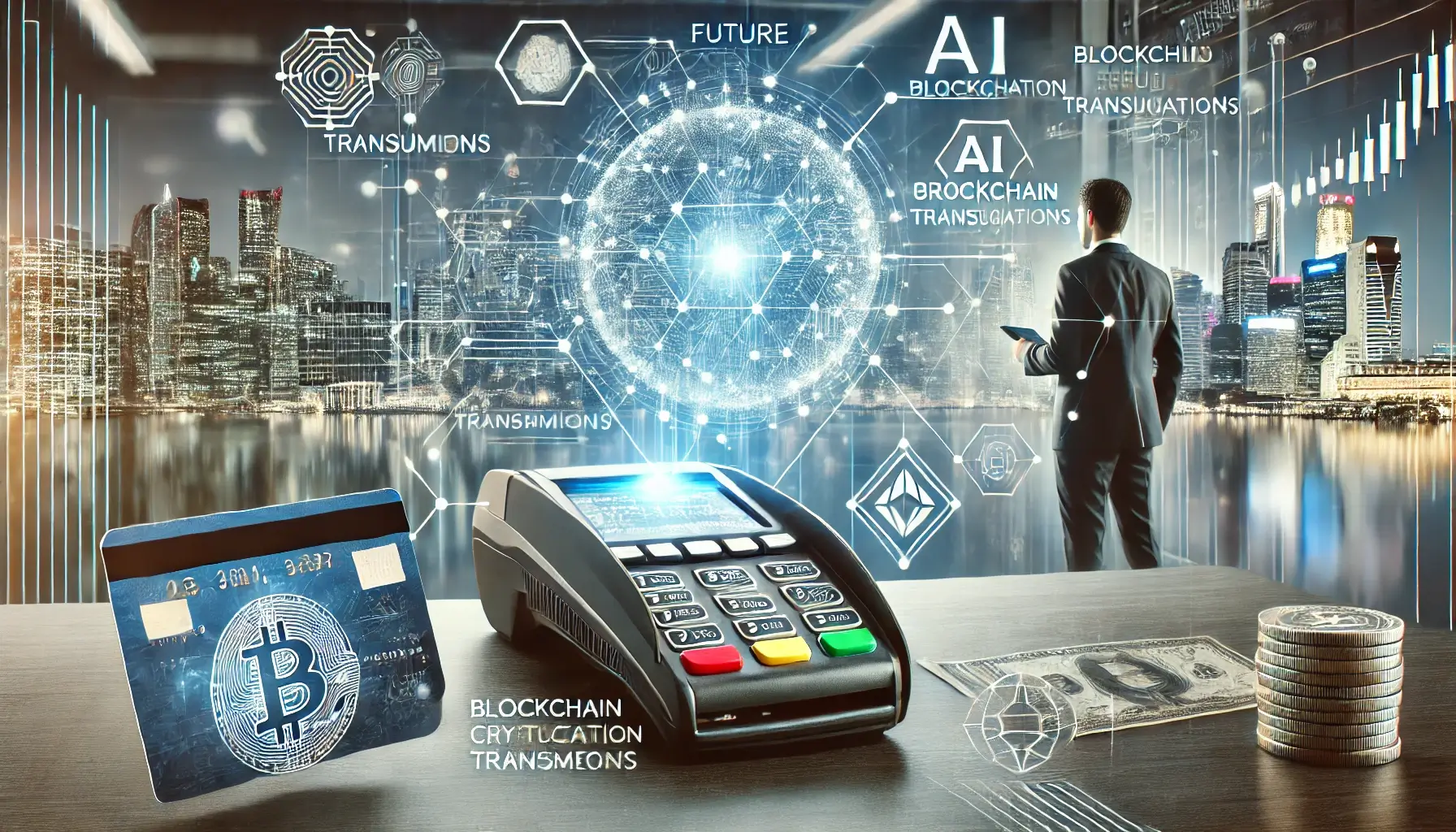-
How Digital Nomads Are Redefining Work and Lifestyle 🌍💻
Mar 06, 2025 | 39 Comments -
How Artificial Intelligence is Transforming Healthcare 🏥🤖
Mar 06, 2025 | 0 Comments -
How Cryptocurrency is Reshaping the Global Economy 💰🌍
Mar 06, 2025 | 0 Comments -
How to Build a Strong Personal Brand: Stand Out & Grow Your Influence 🚀📢
Mar 02, 2025 | 0 Comments -
The Power of AI in Business: How Artificial Intelligence is Transforming Industries 🚀🤖
Mar 02, 2025 | 0 Comments -
How Smart Homes Are Changing the Way We Live 🏡🔋
Mar 02, 2025 | 0 Comments -
How Electric Vehicles Are Revolutionizing Transportation 🚗⚡
Mar 02, 2025 | 0 Comments -
The Future of Renewable Energy: How Green Technology is Changing the World 🌍⚡
Mar 02, 2025 | 0 Comments

The Future of Digital Payments: How AI and Blockchain Are Transforming Transactions
The Future of Digital Payments: How AI and Blockchain Are Transforming TransactionsThe world is moving towards a cashless economy, with digital payments becoming the standard for transactions. AI, blockchain, and fintech innovations are revolutionizing the way people send and receive money. From cryptocurrency to biometric authentication, the digital payment landscape is evolving rapidly. Businesses and consumers must adapt to these changes to stay ahead in 2025.
The Rise of Digital Payments
Digital payment methods have surged due to increased e-commerce adoption, mobile banking, and fintech advancements. Governments worldwide are also pushing for cashless economies to reduce fraud and enhance transparency.
1. Benefits of Digital Payments
Moving away from cash offers several advantages for consumers and businesses:
- Convenience: Fast and secure transactions anytime, anywhere.
- Reduced Fraud: AI and blockchain enhance transaction security.
- Lower Costs: Digital transactions reduce the need for handling physical cash.
- Global Transactions: Enables cross-border payments without high fees.
2. Challenges in Digital Payments
Despite the benefits, digital transactions face some challenges:
- Cybersecurity Threats: Hackers target online transactions and payment gateways.
- Regulatory Compliance: Fintech companies must adhere to strict financial laws.
- Digital Divide: Not everyone has access to banking and internet services.
- Data Privacy Concerns: Consumers worry about how their payment data is stored.
AI in Digital Payments
Artificial intelligence plays a critical role in enhancing security, fraud prevention, and personalized financial services.
1. AI-Powered Fraud Detection
AI algorithms analyze transaction patterns to detect and prevent fraudulent activities.
- Machine learning identifies suspicious transactions in real-time.
- AI-driven biometric authentication enhances payment security.
- Automated systems block fraudulent transactions before processing.
2. AI-Driven Personalized Financial Services
Fintech companies use AI to offer customized financial recommendations.
- AI-powered chatbots provide instant banking assistance.
- Smart budgeting apps use AI to help users manage expenses.
- AI predicts spending behavior and offers personalized investment options.
Blockchain and Cryptocurrency in Digital Payments
Blockchain technology is revolutionizing digital payments by enhancing transparency, reducing transaction fees, and eliminating intermediaries.
1. The Role of Blockchain in Payment Processing
Blockchain ensures secure, decentralized, and immutable transactions.
- Smart contracts automate payments without intermediaries.
- Decentralized finance (DeFi) offers alternative banking solutions.
- Blockchain reduces cross-border transaction delays and costs.
2. The Rise of Cryptocurrency Payments
More businesses are accepting cryptocurrency as a payment method.
- Bitcoin and Ethereum are widely used for digital transactions.
- Stablecoins offer price stability for secure payments.
- DeFi platforms enable decentralized lending and borrowing.
Top Digital Payment Methods in 2025
1. Mobile Wallets and Contactless Payments
Digital wallets such as Apple Pay, Google Pay, and Samsung Pay dominate mobile transactions.
- Contactless payments increase in popularity.
- QR code-based payments expand across global markets.
- Retailers adopt NFC technology for seamless transactions.
2. Biometric Authentication for Secure Transactions
Facial recognition, fingerprint scanning, and voice authentication are improving payment security.
- Biometric technology replaces passwords and PINs.
- Fraudulent transactions are minimized with biometric verification.
- Major banks integrate biometric security into mobile banking apps.
3. Buy Now, Pay Later (BNPL) Services
BNPL options allow consumers to split payments into installments.
- Companies like Klarna and Afterpay lead the BNPL revolution.
- Interest-free installments attract younger consumers.
- Retailers integrate BNPL to boost sales conversions.
Regulatory Changes and Compliance in Digital Payments
Governments and financial institutions are implementing new regulations to ensure transparency and security.
1. Central Bank Digital Currencies (CBDCs)
Governments are developing digital versions of their national currencies.
- China's Digital Yuan is leading CBDC adoption.
- The U.S. Federal Reserve is researching digital dollar possibilities.
- CBDCs aim to enhance financial inclusion and reduce transaction costs.
2. Stricter Anti-Money Laundering (AML) Regulations
Governments are tightening financial regulations to prevent illicit transactions.
- Fintech companies must verify user identities through KYC policies.
- AI-powered compliance systems detect suspicious activities.
- Data protection laws ensure consumer privacy.
Future Predictions for Digital Payments in 2030
The future of digital transactions includes further innovations:
- AI-driven financial planning tools for automated savings.
- Quantum computing enhances encryption and cybersecurity.
- Global cryptocurrency adoption as mainstream payment methods.
- Widespread use of blockchain for real-time settlements.
Conclusion
The digital payments industry is undergoing rapid transformation with AI, blockchain, and mobile technology leading the charge. Businesses and consumers must embrace new payment solutions to stay competitive. By integrating automation, decentralized finance, and secure transaction methods, the future of digital payments promises greater efficiency, security, and accessibility.
0 comments
No comments yet. Be the first to comment!
Your comment